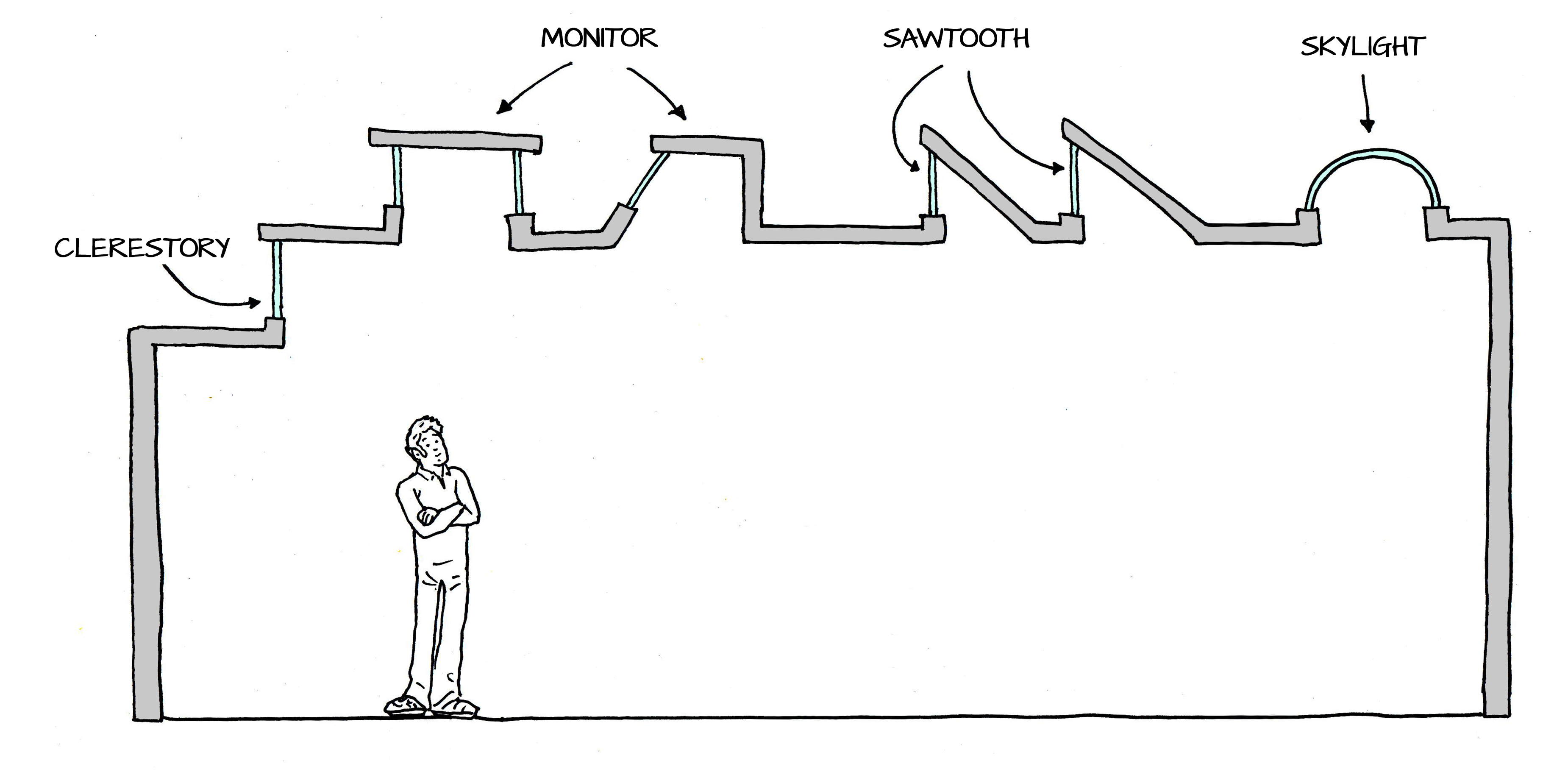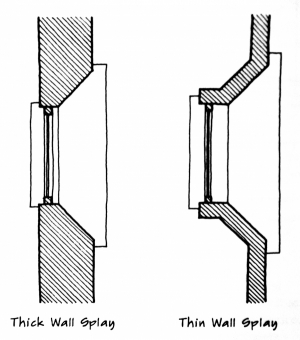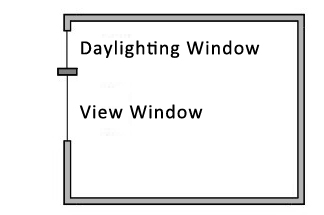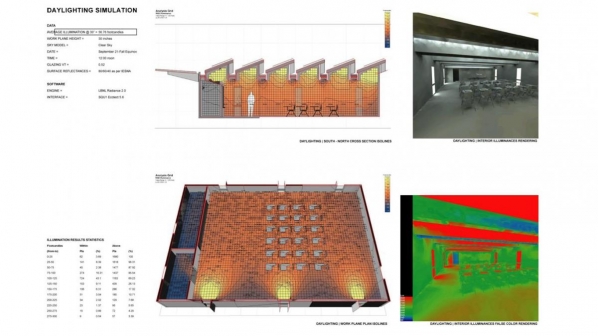You are here
The locations and size of apertures matter a great deal if you want to utilize natural light in your building. As mentioned in the massing and orientation page, windows and other openings facing the path of the sun receive much more direct sunlight than those facing away. However, more daylighting is not necessarily better. Bringing in too much light can cause glare and overheating. See Measuring Light for Lighting and Daylighting Design.
Evenly-distributed light is critical to good daylighting, so apertures that are evenly distributed are useful. Continuous-strip apertures are even better, and apertures on multiple sides are often best. Otherwise rooms can have "hotspots", both in terms of temperature and brightness. Often this is accomplished with horizontal bands of windows that are placed high in a space (to avoid glare and reflect light off the ceiling), or with evenly spaced vertically oriented windows that reach the full height of the room.
 |
|
Evenly-spaced windows on two walls provide well-distributed light |
Side Light
Light coming from side apertures like windows can only penetrate so far into a building. This is the reason why shallow floor plans are usually recommended for daylighting multi-story buildings. A simple rule of thumb for most latitudes is that daylight penetrates into a room roughly 2.5 times the height of the top of the window.
 |
Side lighting only reaches so far into a room |
Windows facing away from the sun’s path rather than towards the equator provide the most even illumination, though not the brightest. East and west facing windows can provide very bright light in the morning or evening but insufficient light at other times of day, and are very prone to glare. Windows facing towards the sun's path get the brightest light; they can also have glare, but the glare is much easier to control than on East or West walls.
In middle latitudes and those closer to the equator, skylights can provide the brightest and most consistent illumination, but in latitudes closer to the poles they are less bright and much less seasonally consistent.
Top Light
Higher apertures are more effective at bringing light deep into the building. This often means glazing in roofs.
Skylights are not the only kind of aperture to bring light in through roofs. Other "top lighting" strategies include clerestories, monitors, and saw-tooths or other scoop-shapes. These each have their own advantages and disadvantages in construction cost and how they bring the sun into the space at different times of day and year.
 |
|
Different kinds of top lighting |
Top lights are usually much brighter than side lights per unit area, for the same glazing properties. A rough approximation for moderate latitudes is that a vertical monitor brings in twice as much light as a view window, an angled monitor brings in three or more times as much depending on the angle and a horizontal skylight brings in five times as much light as a view window.
Baffles are often used in top lighting to help direct the light usefully into the room, and splaying the edges of openings can help the light spread more broadly though the space.
 |
|
Two kinds of splayed opening (Image from Sun, Wind, and Light by G.Z. Brown and Mark DeKay) |
Daylight Apertures vs. View Windows
Good daylighting design considers daylighting apertures separately from view windows, even when the same window is used for both. Daylighting windows have different optimal sizes, placement, and glazing properties from view windows. Windows used for both functions usually compromise performance.
Daylighting apertures are best located as high as possible on the walls or ceiling, for deeper penetration of light into the space. View windows however, must be at eye level for occupants, both sitting and standing. View windows are usually preferred to be large, while daylighting windows can be smaller.
While daylighting windows ideally diffuse the light, view windows must have clear views. This makes the avoidance of glare a top concern for view windows. Often shades and/or light shelves are placed between daylighting windows and view windows, to shade the view window while diffusing and redirecting light from the daylighting window. Also, view windows may be more heavily tinted than daylighting windows to avoid glare.
 |
|
Daylighting window vs. view window |

